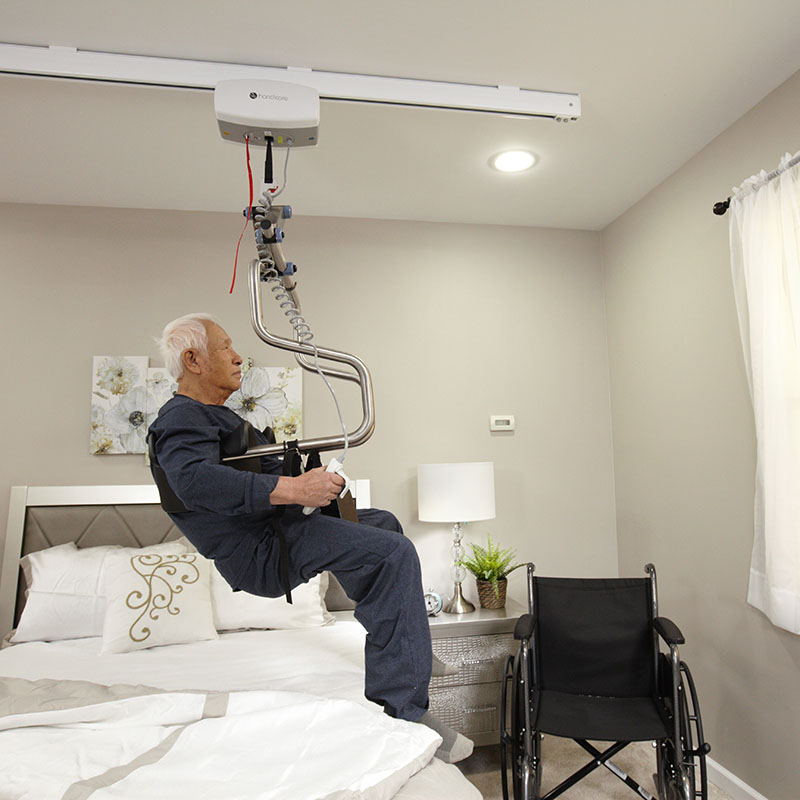The patient lift systems are created to aid caregivers and health professionals in lifting and moving patients safely and comfortably. They are crucial for people who have limited mobility for disabled people, seniors, and patients recovering from injury or surgery.

There are many kinds of lift systems available for patients, such as overhead Hoyer lifts and mobility lifts. We will go over each system in depth and discuss their advantages.
Mechanical lift transfer
Mechanical lift transfer employs either an electric or hydraulic powered mechanism to lift patients up and move them. It is comprised of a lift unit, a sling, and a base with wheels. The lift unit attaches to the sling that wraps around the patient and will then raise the patient from a lying or seated place.
The mechanical lift transfer reduces the chance of a the caregiver and the patient being injured. It also minimizes the physical stress on the body of the caregiver because the lift device does most of the heavy lifting. Moreover, mechanical lift transfer allows for quick and easy movement in tight spaces, making it a great choice for home care settings.
Overhead hoyer lift
The overhead Hoyer Lift is a lift system that makes use of an overhead track for transfer of patients. It consists of a track that’s installed on the ceiling, and an elevator unit that is connected to it. A sling wraps around the patient.
The overhead Hoyer Lift is perfect for patients that need to transfer often. It provides a safe, efficient way of transfering the patient from one location to another. It helps in the easy transfer from a chair or the bed into wheelchair.
One of the major advantages of an overhead Hoyer lift is that it frees area for flooring, since the lift is suspended from the ceiling. This is ideal for spaces with small dimensions or that are limited in floor space. Furthermore, the overhead Hoyer lift has higher capacity weights than other lifts, making it suitable for bariatric patients.
Mobility lift systems
Mobility lifts are made to aid patients with restricted mobility in getting around their homes or other environments. They comprise the base unit, which has wheels and a lift arm that has an sling that is attached to it. The patient is seated within the sling, which is moved by the arm.
Mobility lifts are a great option for those who need assistance with mobility but aren’t able to stand or walk on their own without assistance. They’re a reliable and safe method of transporting patients, while preserving their autonomy and allowing them live a quality life.
The portability of mobility lift systems comes with many advantages. They are easy to transport from one place to another making them an excellent option to use in a variety of situations. Mobility lifts require only a little effort on the part of caregivers.
The right choice for a patient lift system
When choosing a wheelchair lift system, many factors need to be considered, including the level of mobility, weight, and size, as well as the setting that the lift system will be placed. It is also essential to consider the caregiver’s physical capabilities and limitations, along with the budget.
For patients who are unable to move and the requirement for frequent transfers, the overhead Hoyer lift is a fantastic alternative. It’s easy to use, safe, and efficient for patient transfers. However, it is costly and requires the installation of a system and maintenance, which makes it ideal for facilities that provide long-term care.
Mechanical lift transfers are beneficial in any home-based care setting because of their ease of usage, minimal physical demands on caregivers as well as affordability. Before you invest in this equipment, it is important to evaluate your personal circumstances. In order to ensure that you’ve made the right decision, begin by doing some research and speaking with industry experts – doing so will increase the probability that you will ultimately find the right product that will meet your exact needs and is within your budget. Once you’ve gathered the information you are able to make an informed decision.
For more information, click overhead hoyer lift